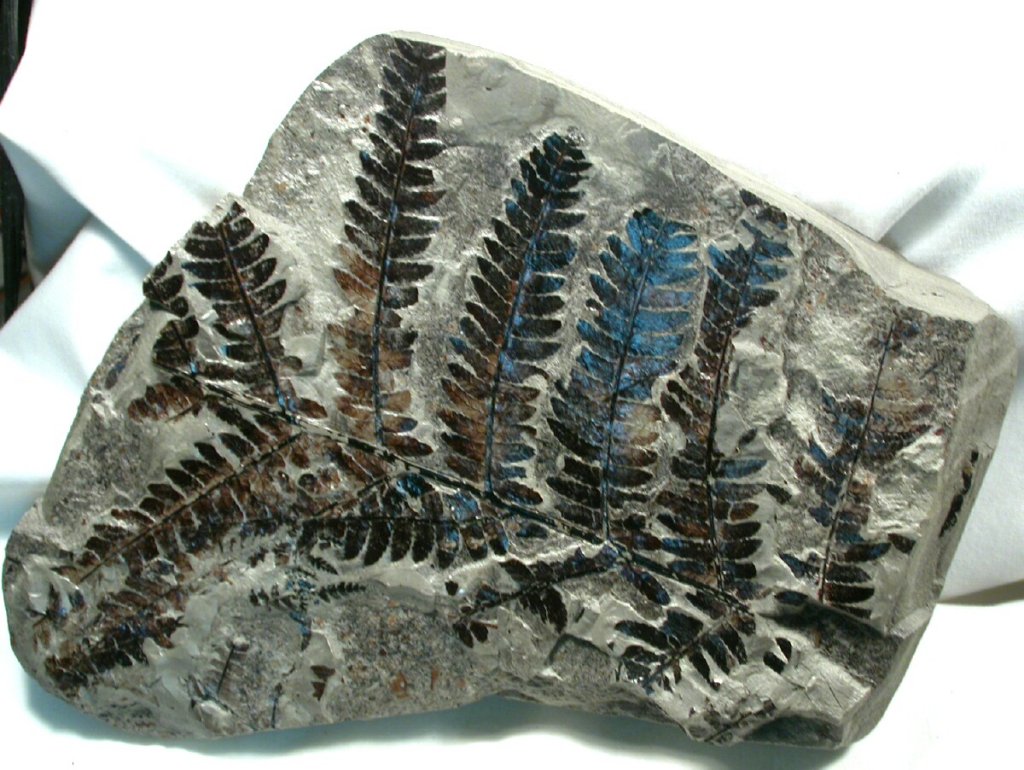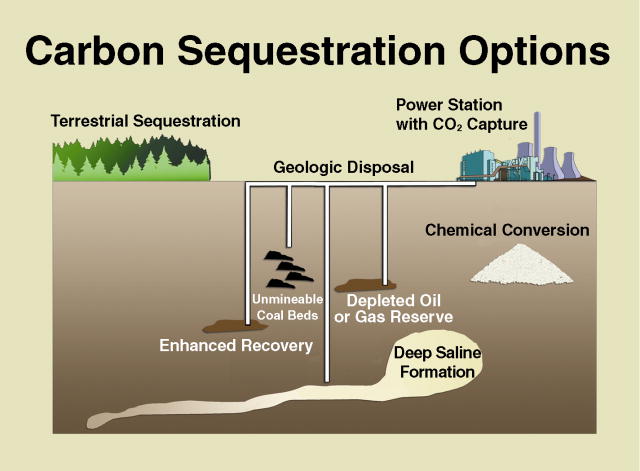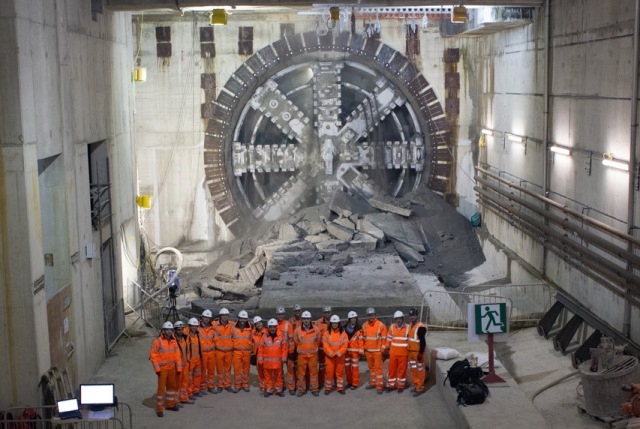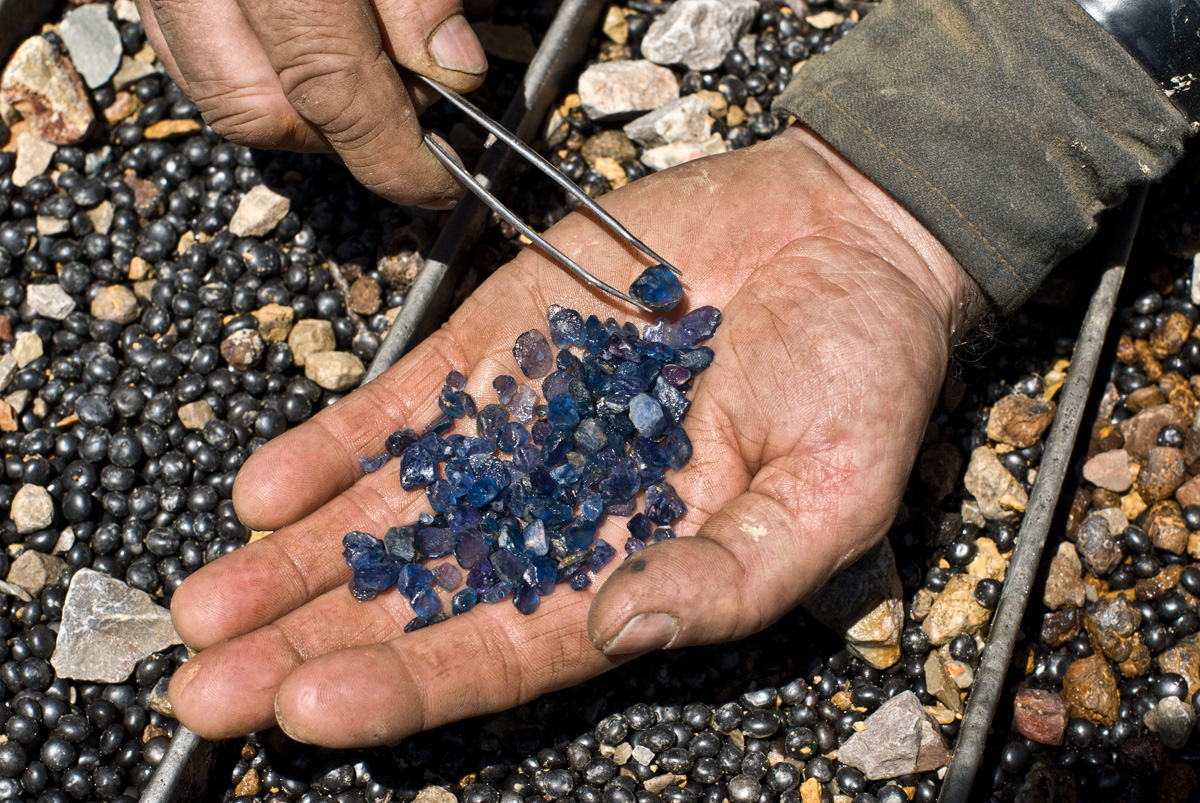Sunday 29 September 2013
Gymnosperm
Gymnosperms are a type of seed-bearing plants (the name means "naked seed") that form a group that produced the earliest fossil trees. They are an important group of plants to study as a result of their evolutionary history.
The big controversy
One of the most topical issues in geology at the moment is hydraulic fracturing of shale to extract hydrocarbons that are trapped in the sediment. Shale is largely impermeable so gas and oil that has matured from organic material within the shale cannot migrate (flow) into a rock from where the gas and oil can be pumped. The technique is used already to increase the recovery of oil from North Sea oil fields and also to make geothermal energy schemes work.
To make the rocks more permeable water is pumped into the shale at high pressure to break the rock to create pathways for oil and gas to flow out of the rock. Ceramic beads or sand is pumped with the water to stop the fractures closing as illustrated here. The water can lubricate pre-exisiting faults and cause earthquakes (though these might better be described as minor tremors).
The issue inspires passionate debate on both sides of the argument. Organisations such as Greenpeace are concerned about both the direct and indirect environmental consequences of extracting hydrocarbons in this way. The Government have endorsed the technique as a way of increasing our energy supply, thus decreasing the cost of energy and also to boost our energy security - we are currently dependent on buying gas from Qatar to keep our houses warm.
To see the science behind fracking, have a look at the British Geological Survey's You Tube channel.
The UK is not the only country to be trying to decide about the economic and environmental viability of fracking.
Do you think that we should frack for the gas that we need?
Wednesday 25 September 2013
A strange business
As you may know I am not very impressed with gemstones; with the fuss,expense and particularly the violence that seems to accompany them. However the development of a possibly ethical emerald business based in London but operating in Africa reveals some of the strangeness of the gem industry and some of its possibilities. The oddest thing for me though, is how many people are swayed by the marketing of these shiny and sparkly bits of rock.
Tuesday 24 September 2013
Earthquake!
A big earthquake has struck southern Pakistan. A magnitude 7.7 seismic event has killed at least 30 people in Balochistan Province and been felt around much of the region.
This is a big earthquake but the death toll may not rise too high (though any deaths are a tragedy for the people involved). This area is sparsely populated and poor; many of the houses are low-rise and made of mud so when they collapse in the shaking, they are less likely to kill than stone structures. There is a real danger though of more people dieing in the aftermath of the event from food, shelter and water shortages than died in the earthquake itself.
UPDATE: 25/9/13
The death toll has , unsurprisingly, risen to over 200 at the latest count. More surprising has been the appearance of a new island off the coast of Pakistan. As the stress has changed in the plate, it has deformed to push the sea bed above sea level to make new land.
A slideshow of photographs from the area affected.
Mapping the elements
The British Geological Survey have beeen mapping the chemistry of Britain's geology using a technique called geochemical sampling. By taking samples of soil, sediment and stream water elements from the bedrock can be measured and mapped. The BGS have been doing this for 40 years and have just finished.
The results from this research (called G-BASE) show an interesting pattern that does reveal some interesting patterns and could show the location of hidden geological resources.
Monday 23 September 2013
The end for carbon capture?
Carbon capture and storage (CCS) could be a way for us to extract fossil fuels from rocks and to put the waste products back there, safely removed from our atmosphere. One of the biggest supporters of this technology has been the Norwegian Government, though this is about to change.
Norway finds itself in a dilemma; its oil industry has made it one of the richest countries in the world yet the Norwegians take their environmental responsibilitiies seriously. One way they have been addressing this is to invest in developing the technology needed to make CCS viable. However, in the light of increased costs and delays and a general election, the project has been abandonded. The geology of CCS does work and the engineering to support it could be developed, the question is whether the economics and political will are in place to make it happen.
Do you think that we should persevere with developing CCS? More importantly, would you be willing to pay for it as part of your energy costs?
Friday 20 September 2013
Permitted intrusion
A permitted intrusion is an igneous intrusion where the space that it occupies has been created by forces other than those created by the intrusion of magma. For example if a volcano collapses after eruption in a cauldron subsidence event to make a caldera, any magma intruded along the faults that occur will follw those faults and result in a permitted intrusion. An example of this type of intrusion is a ring dyke.
Wednesday 18 September 2013
Mount Sinabung gets unbunged
Mount Sinabung, a volcano in Indonesia, has started to erupt for the second time this week. A slideshow of photographs shows some of the effects of an andesitic eruption and how even a relatively small event can be very disruptive for the people living around the volcano.
Skills, skills, skills
You may wonder why teachers keep going on about developing your skills all the time. The reason is that they are important if you are going to be able to choose where you work in the future. It is your skills that give you more to "sell" to an employer than just your time.
The skills that a geologist requires are very broad. A geologist needs a good understanding of all aspects of science; they need to be able to interpret data from: specimens, graphs, maps, cross-sections, diagrams, photo-micrographs, satellite images, mathematical models and more. They have to be numerate and literate as they have to interpret data and then communicate their interpretation to a variety of audiences.
If you can master these skills (by working hard and practising them) there are rewards out there. There are skill shortages in several fields of geology at present such as in the North Sea Oil Field that are leading to higher wages being offered, though the importance of having a range of skills is apparent from the fallout from the drop in coal prices that is affecting parts of Australia.
How are you going to make sure that you have the skills to acheive your dreams?
Monday 16 September 2013
Curious about Curiosity?
One of the most exciting pieces of geological research currently being undertaken is NASA's Curiosity Rover which is exploring the surface of Mars. The geological discoveries that the mission has already made, before it even reaches its objective, are remarkable.
There is a lot of information about the mission on the Internet, some useful links are below:
NASA Mars Science Laboratory
A year of discovery
Geological discoveries
Wikipedia (Mars Rover)
Friday 13 September 2013
Bottom Load
Bottom Load is another term for bed load - the clasts of rock that are transported along the bottom of a river by the process of traction.
The bottom load can tell us a great deal about the nature of the rver that transported the sediment. the shape of the clasts tells geologists about the maturity of the sediment; the arrangement of the clasts tells geologists about the direction of the river's flow if the pebbles are imbricated; the size of the clasts can tell geologists the speed of the flow that deposited them through using the Hjulstrom Curve.
Duelling Dinosaurs
One of the most remarkable dinosaur fossils ever found is up for sale. It is one of the very rare fossils of a Tyrannosaurus (there have only been two specimens found that are more than 50% complete). The fossil specimen has preserved the final moments of two dinosaurs, predator and prey, as they fought for survival. The Tyrannosaur even left one of its teeth embedded in the neck of the Ceratopsid dinosaur it was attacking. On what turned out to be a bad day for both dinosaurs they managed to fatally wound each other and were preserved still locked together in combat. What makes it even rarer is that it is thought to be a member of a new species of dwarf Tyrannosaur called Nanotyrannus (though this conclusion is controversial).
If you would like to buy this amazing fossil, either to decorate your bedroom or to donate to your favourite Geology teacher then you will need deep pockets..... the auction estimate is $9,000,000!
This does raise issues about the commercial aspects of fossil hunting. If this specimen was a work of art there would be an outcry if it were to disappear into a private collection. This is a remarkable piece of scientific data but it could end up largely unstudied and out of public view in the collection of a rich amateur. What's being done is legal, but I would like to see this special fossil in a museum where it would be available for study and for people to see it for themselves.
If you would like to buy this amazing fossil, either to decorate your bedroom or to donate to your favourite Geology teacher then you will need deep pockets..... the auction estimate is $9,000,000!
This does raise issues about the commercial aspects of fossil hunting. If this specimen was a work of art there would be an outcry if it were to disappear into a private collection. This is a remarkable piece of scientific data but it could end up largely unstudied and out of public view in the collection of a rich amateur. What's being done is legal, but I would like to see this special fossil in a museum where it would be available for study and for people to see it for themselves.
Monday 9 September 2013
Guyot
A guyot (or seamount) is a submerged, extinct volcano. There are chains of such volcanoes streching across the Pacific Ocean in particular that are very important in our interpretation of past plate movements and hot spot theory.
I chose this as "Word of the Week" because the biggest volcano on Earth has recently beeen discovered in the Pacific Ocean. The scale of this is staggering (it is over 15 times the area of Wales) and has been compared to the biggest volcano we kow of - Olympus Mons on Mars. What is really surprising is that we have only just discovered something so big - it does give the exciting prospect of what else is there to discover about our planet....
Thursday 5 September 2013
A complicated issue
We have a compicated relationship with extractive geological industries. We all rely on the geological materials extracted from the ground (oil, coal, gas, metals, industrial minerals, water etc) for our everyday lives. Even just to read this blog entry you are using several different metals that make the device and its electronics, plastics for the case, silica in the screen - before we start to consider the fuels used to generate the electricity that's required. This reliance on extracting geological materials from the Earth is matched by ambivalence caused by the social and environmental costs of that extraction.
Two stories came out over the summer that illustrate the dissonant extremes of this industry. The first is a slide show showing the shocking conditions in which children are working in some Tanzanian gold mines (warning: some of the photos are a little upsetting).
Tanzania's child gold miners
The other side of the industry are the positive economic effects that mining can bring. Western Australia is currently undergoing a remarkable economic boom by providing the geological resources for Asia's economic growth. Some of the peolpe who are benefitting from this are the several former Cowbridge geologists who have very good jobs working in this area.
Western Australia's resource boom
As geologists we share this ethical dilemma. How do you think that we can create positive social, environmental and economic impacts from industries that, like it or not, are essential?
Tuesday 3 September 2013
What is Geology?
Over the next few days there are a lot of new students starting their journey through the science of Geology and discovering an exciting new way of looking at the world through the eyes of a Geologist. It does beg the question "What is Geology?"
The definition of the word is a start:
but that doesn't really give the full breadth of the scope of the subject. Reading the blog posts on here will give you an idea of what geologists do.
Poisoned water
The mineral above looks very lovely but it contains a deadly secret. It is a sulphide mineral called Arsenopyrite and, as the name suggests it contains the element Arsenic - which is poisonous.
The mineral is useful as an ore of Arsenic (a useful metal in several alloys) and also is a good indicator of the occurrence of gold in its host rock. However, when groundwater is being extracted from rocks that contain arsenopyrite the water will be contaminated with this toxic element. This is a big problem in some countries, notably Bangladesh and China where tens of millions of people can be affected.
China's Arsenic risk estimated
Hydrogeologists now have a means to predict where these problems might occur using remote sensing and GIS techniques which may help some of the areas at risk. What do you think could be done to remediate the problems?
Helluhraun
Helluhraun is an Icelandic word for a geological feature that, in English, has a Hawaiian word (pahoehoe) to describe it.
This is a ropey surface that forms on a very fluid mafic lava flow, like the skin on a custard that wrinkles up when it is poured.
I thought it would be a good way to welcome you all back for the new school year.
Monday 2 September 2013
The Cardboard Cathedral
In 2010 and 2011 the city of Christchurch on New Zealand's South Island was heavily affected by a series of large earthquakes. The worst of these was the 22nd February earthquake that as well as causing some 185 deaths also severely damaged many buildings including the city's Victorian cathedral. Much of the damage was caused, not by the power of the earthquake which wasn't that large, but by the liquefaction of the ground that the city is built on.
Video explanation of liquefaction
Footage of liquefaction
To replace the cathedral that was built from stone, a new one has been constructed using cardboard as a light and cheap material to quickly give Christchurch an important step to recovery after such a devastating event.
BBC News story
A leap forward?
Norway's biggest oil company, Statoil, are developing an old gas field in an area 125 km form the Norwegian coast. This doesn't seem to be a "leap forward" until we look at the technology they are using to exploit the resource. The company have built a series of compressors to extract the gass from the hydrocarbon trap, compress it and pump it to a plant onshore, but these installations are sunk and placed on the sea bed - there is no platform at the sea surface and they are operated remotely. This does give the possibility of exploiting hydrocarbon reserves in deep water or in places like the Arctic Ocean that are very challenging places to put conventional rigs or to develop smaller traps.
The controversy comes from the tension between the undoubted commercial benefit from extracting and selling the gas - Norway os one of the richest countries in the world because if geological resources like this - and the environmental impact of producing an using the hydrocarbons.
It is a hugely impressive engineering achievement (and it does present on opportunity to further the development of carbon capture and storage) but is it worth the environmental cost?
Mr Walsh's penthouse?
This roof-top apartment in Beijing decorated tastefully in fake rock and real trees was built by Zhang Biqing as his own "Grand Design" for his house. Sadly he didn't quite get the proper permission to build it on top of the apartment block. By the time you read this, he will have had to demolish his dream crib.
BBC News story
Really boring!
One of the biggest engineering projects in the world is currently going on, almost without being noticed, underneath the streets of London. The Crossrail project is £15,000,000,000 worth of tunnels being dug to allow people to take trains across London without having to change stations via the Tube network. The statistics that go with the tunnel are staggering and can be seen by clicking the link below.
BBC News story
Tunnelling presents a huge range of engineering and geological challenges and does provide some very good job opportunities for engineering geologists, if you can cope with the unusual working environment. Matt Lock, a former Cowbridge student, is working on this project as a geotechnical engineer. What do you think the challenges of tunnelling through different rock types? How could these problems be solved?
Diamonds are forever?
As some of you know, I really don't like diamonds. There are several reasons for this that I would be happy to share with anyone that asks me; but it seems that I am not alone in this. The price of rubies and sapphires has increased more quickly than the price of diamonds over the last few years indicating a rise in the demand for these precious gemstones.
Ruby and Sapphire are both varieties of a mineral largely made up of aluminium oxide called Corundum. The different colours are caused by different trace elements of Chromium (which gives ruby its red colour) and Iron, Titanium, Magnesium or Copper (which give Sapphires their colour varieties).
Perhaps this change in demand is caused by fashion or by increasing numbers of women choosing their own jewellery (men tend to go for the "safe" option of diamond if they are choosing). Regardless of the reason, the increasing price will lead to more geological exploration to discover new sources of these minerals.
BBC News story
In case you are wondering, my favourite decorative mineral has to be one that has a relatively low price (though it is useful as an ore of copper) but is beautiful with its botryoidal, banded shade of green. Can you find out what it is?
Subscribe to:
Posts (Atom)






















